When new brands hit the scene, there's typically a big push to come out of the gate by going extreme. New kids need to differentiate themselves from the crowd, after all, or they get lost in it. Every brand needs an edge – a unique selling point that makes a splash. Typically, this means loaded formulas with high ingredient dosages and wild bottle art.
One new brand has decided to go in a different direction.
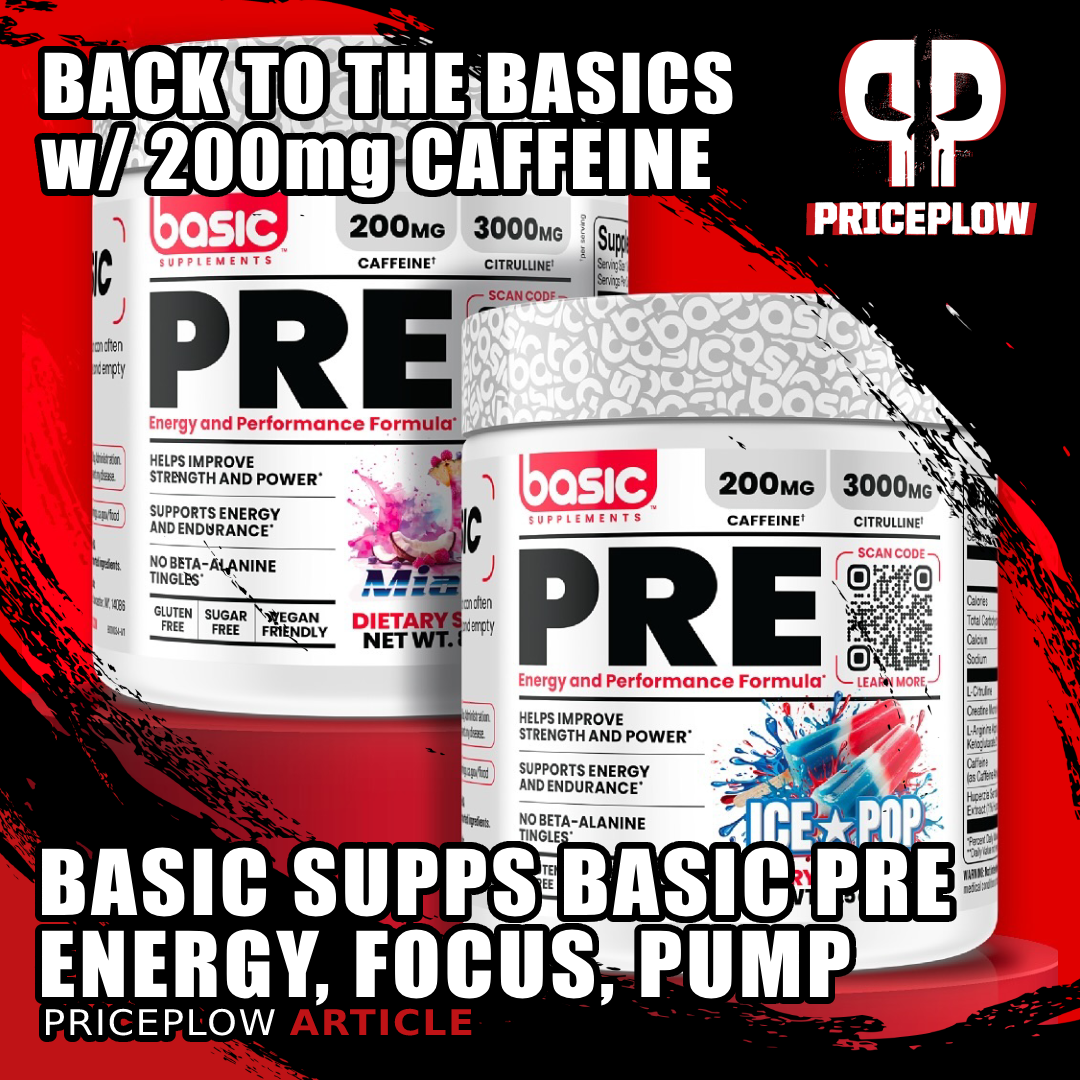
Basic Supplements Basic Pre brings just what's needed for focus, energy, and pumps, with 200mg caffeine and 3g citrulline per scoop -- and it's affordable with no tingles!
Basic Supplements is exactly what it sounds like – a brand dedicated to getting back to the basics. Introduced by Marc Curcio in Episode #156 of the PricePlow Podcast, they're only a couple months old, but have hit the market like a breath of fresh air.
Today, we'll go over their Basic PRE Pre-Workout, which provides the basics you need for focus, energy, and pump. And no tingles!
Simplicity Leads to Reliable Results
If you look at many pre-workouts these days, the ingredient list is a mile long, filled with proprietary trade names and unpronounceable ingredients. Many of these ingredients have valid uses, but they add significant cost (and processing on your liver) to achieve a marginal increase when you're already 80% of the way there with 4-5 staple ingredients.
Staple ingredients – proven compounds like citrulline, creatine, and caffeine - may not be unique at this point, but that's because they work. That's why nearly every active nutrition company uses them. Basic has taken it a step further by adding arginine to help boost the citrulline and called it a day. No magnifying glass required to read the label.
We're going to dive into how Basic PRE works, but first, let's check PricePlow for good Basic deals and watch our video review of the new product:
Basic Supplements PRE – Deals and Price Drop Alerts
Get Price Alerts
No spam, no scams.
Disclosure: PricePlow relies on pricing from stores with which we have a business relationship. We work hard to keep pricing current, but you may find a better offer.
Posts are sponsored in part by the retailers and/or brands listed on this page.
This area is reserved for Team PricePlow's upcoming videos.
Subscribe to our channel and sign up for notifications so you catch it when it goes live!
Basic PRE Ingredients
Each 1 scoop (8g) serving contains the following ingredients:
-
L-Citrulline - 3000mg
L-citrulline is a non-essential amino acid known for its ability to significantly boost nitric oxide production, enhancing blood flow, oxygen, and nutrient delivery in the body.[1,2] Found naturally in foods like watermelon, L-citrulline is a key ingredient in pre-workouts due to its performance-enhancing properties, particularly its ability to improve endurance and amplify muscle pumps.
The effectiveness of L-citrulline lies in its role in the body's ureagenesis cycle, where it helps remove ammonia, a byproduct that can impair energy production.[1] L-citrulline is converted into L-arginine in the kidneys, leading to nitric oxide (NO) production,[3] causing vasodilation (expansion) of blood vessels.[4] This vasodilation improves blood circulation during exercise, enhancing oxygen uptake, reducing perceived exertion, lowering blood pressure, and decreasing muscle soreness.[1,2,5-10]
The 3 grams of citrulline here exceeds the 2.4-gram clinically validated dose seen in research,[2] providing roughly the equivalent of 6 grams of citrulline malate, which has been shown to promote aerobic energy production.[11]
Interestingly, L-citrulline is also an arginase inhibitor, preventing the breakdown of arginine.[12-14] More on this later.
-
Creatine Monohydrate - 1500mg
Creatine, a naturally occurring substance found primarily in meat, is one of the most researched and effective sports supplements. It's been shown to significantly improve power output, hydration, sprint speed, lean muscle mass, and overall well-being while reducing fatigue.[15-20] Some studies also suggest slight boosts in testosterone, bone mineral density, and cognitive function, particularly in people who don't consume meat.
Creatine works by donating a phosphate group to ADP, which helps regenerate ATP[21-24]; this process is crucial for cellular energy. This allows athletes to perform better for longer and build more lean mass than they would without creatine supplementation.
Research on creatine spans several decades, with numerous meta-analyses confirming its benefits. It consistently enhances muscle growth andpreserves lean mass.[15-19] Additionally, creatine improves power output, as demonstrated by increased one-rep maxes and better performance in high-intensity, short-duration exercises.[20] While it's most effective for activities like weightlifting and sprinting, creatine also offers mental benefits, improving mood and cognitive function,[25-27] especially in individuals with low meat consumption.
How much creatine do you need? It depends...
When it comes to dosing creatine, how much you need truly depends on your diet, body size, and saturation levels. For instance, men excrete about two grams of creatine per day[28] (this varies with muscle mass and size), using about 1.6-1.7% of creatine stores daily.[29,30] Women lose slightly less.[28]
So do you need 3-5 grams of creatine per day, as most claim? Not necessarily, especially if you eat meat or are a woman or smaller individual.
-
L-Arginine Alpha Ketoglutarate 2:1 - 400mg
While citrulline converts first into arginine before raising NO levels, it is actually more effective than arginine in isolation. This is because citrulline is more resistant to breakdown in the stomach and liver than arginine, allowing it to reach the kidneys and bloodstream before being converted into arginine. Consequently, standard practice has been to supplement citrulline instead of arginine.
The Arginine Citrulline Cycle with a breakout showing the arginine-to-nitric oxide reaction. Image courtesy Wikimedia with added biochemistry sources.[31,32]
However, research suggests that the combination of the two ingredients is even more effective than citrulline alone. Citrulline inhibits the enzyme arginase, which degrades orally administered arginine, thereby enhancing the effects of arginine.[12]
A 2017 study conducted in Japan tested three groups of volunteers: one taking citrulline, one taking arginine, and one taking a combination of both.[12] The results showed that the citrulline-arginine combination significantly outperformed the other groups, achieving higher plasma arginine levels and better nitric oxide production, which contributes to improved blood flow and circulation.[12] The study concluded that the combination of citrulline and arginine led to almost double the amount of plasma arginine compared to those not supplementing, showing clear benefits for increasing nitric oxide levels.[12]
In fall of 2024, Mike and Ben flew to Buffalo, NY to Nutrablend Foods, manufacturer for the new upstart brand, Basic Supplements. They interview Marc Curcio for Episode #156, discussing how they're simplifying the supplement industry with high-quality, essential products that are both affordable and transparent.
These findings were further supported by a 2019 study involving college athletes, which demonstrated improved performance when citrulline and arginine were combined.[13] The athletes showed a 5% increase in power output on a stationary bike test, with reduced muscle soreness and improved ease of pedaling, indicating that the citrulline-arginine combination enhances nitric oxide levels and provides tangible benefits in athletic performance and recovery.[13]
These results have also been validated in animal models, where similar effects on blood flow and arginine levels were observed,[14] reinforcing the efficacy of this combination in enhancing both cardiovascular and athletic performance.
While 400 milligrams of arginine generally won't promote significant clinically-backed nitric oxide gains on its own, it can synergize with citrulline to provide a bit more, keeping the pre-workout's costs down.
-
Caffeine Anhydrous (200mg)
Caffeine is one of the most researched supplements, consistently shown to enhance both physical and mental performance. It works by blocking adenosine receptors, reducing neural activity and boosting energy levels.[33,34]
Additionally, caffeine inhibits the enzyme phosphodiesterase, which increases levels of cAMP, leading to greater ATP production and energy.[33,34] Research also indicates that caffeine reduces pain perception and aids in fat loss.[33,34]
200 milligrams of caffeine is a fair and modest amount—it used to be the standard until the standard changed. But as you guessed, Basic Supplements is getting back to the basics—this is a product that can be enjoyed by nearly anyone. You can always take more, after all.
There's also research supporting this dose—a moderate 3 mg/kg dose (200 mg for a 150-pound person) showed improvements in reaction time, performance, and fewer errors when playing tennis.[35] 200 mg has also been shown to reduce reaction times,[36] which shouldn't surprise anyone who's used it!
-
Huperzia Serrata Extract (1% Huperzine A) - 2mg
Huperzine A is a compound that prolongs the action of acetylcholine, the neurotransmitter responsible for learning and cognition, by inhibiting the enzyme that breaks it down.[37]
Even on its own, huperzine A can boost cognitive function by increasing acetylcholine levels.[38] Additionally, it protects neuronal mitochondria from oxidative stress,[39] further enhancing its nootropic effects and making it a valuable ingredient for supporting brain health and mental performance.
This dose leads to 20mcg of Huperzine A, which is a comfortable dose to kick it up a small notch, but not last too long.
All Basic PRE flavors
Check out our up-to-date list of Basic PRE flavors below:
So Ordinary That It's Bold
There are certainly consumers who love to experiment with novel ingredients — to stay on the cutting edge of performance supplementation. For your average Joe, though, he wants only what has been proven to work.
Basic Supps' formulas are so normal that the entire brand's ethos could be described as bold, as paradoxical as that sounds. When the crowd is trying to dazzle with confetti and fireworks, the highest act of rebellion is to take pride in the basics.
Need more? You can head back to our main introductory Basic Supplements article, listen to Episode #156 of the PricePlow Podcast, and see our article on Basic Whey -- the Boston Cream Donut flavor is unbeatable!
Basic Supplements PRE – Deals and Price Drop Alerts
Get Price Alerts
No spam, no scams.
Disclosure: PricePlow relies on pricing from stores with which we have a business relationship. We work hard to keep pricing current, but you may find a better offer.
Posts are sponsored in part by the retailers and/or brands listed on this page.
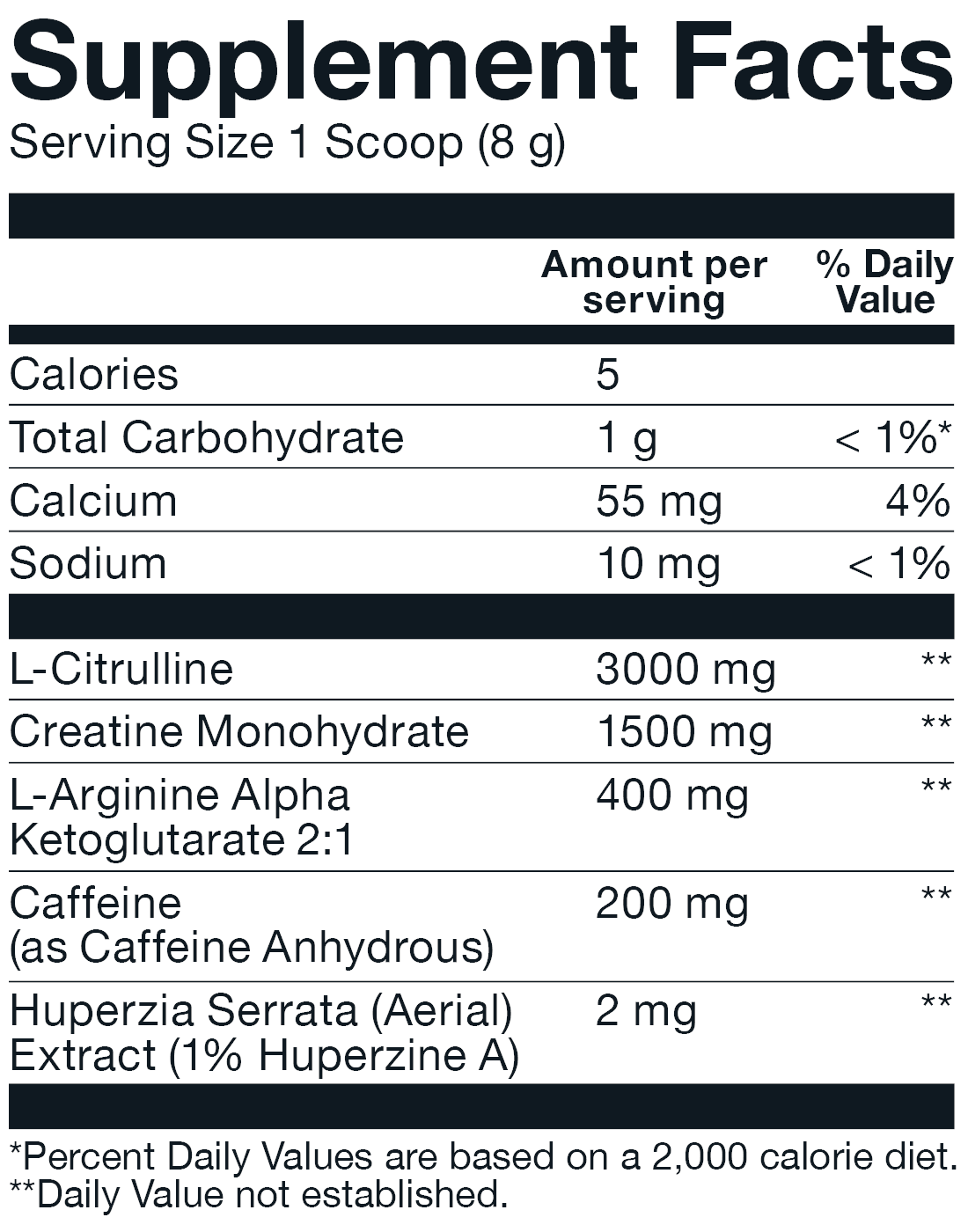
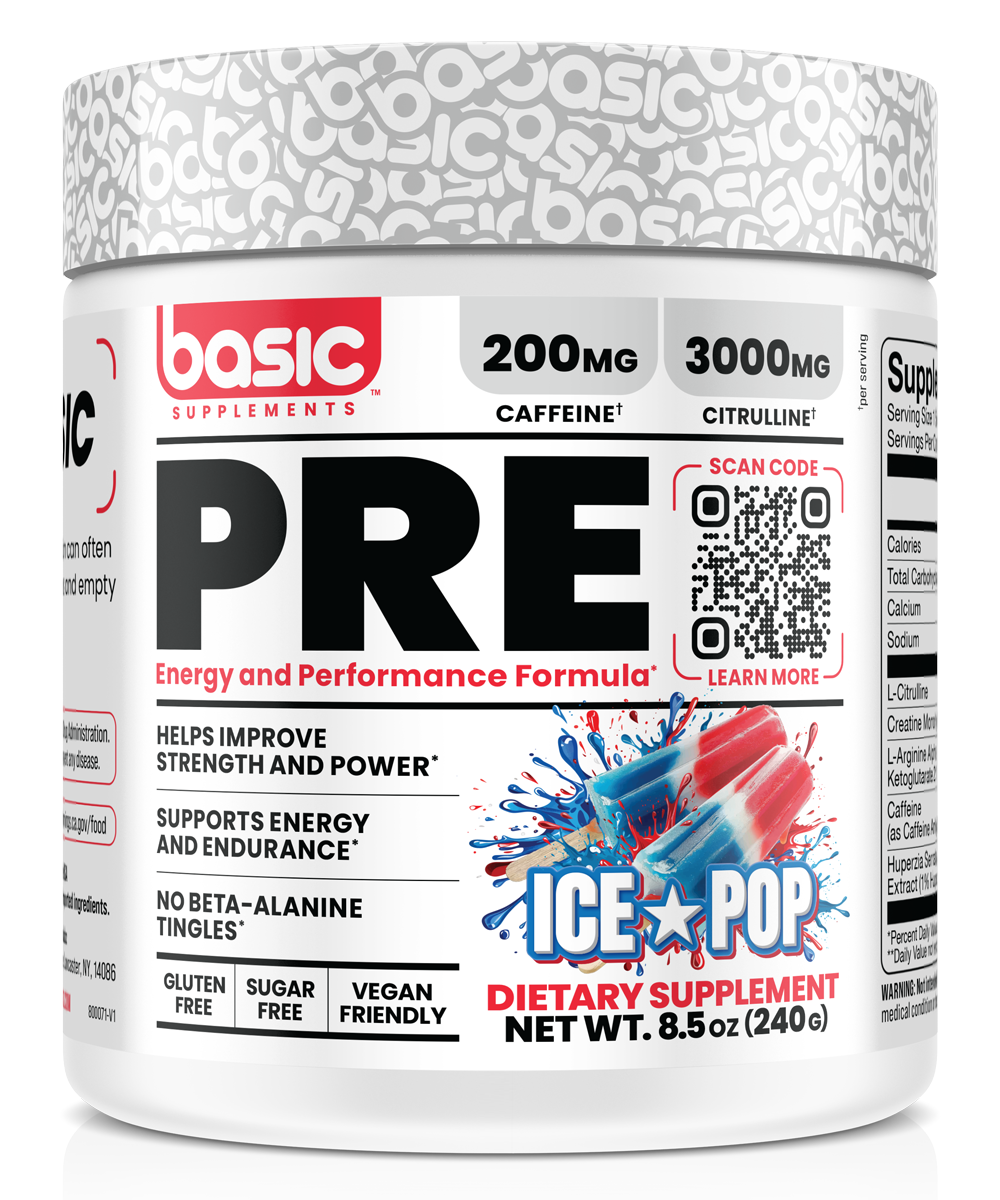
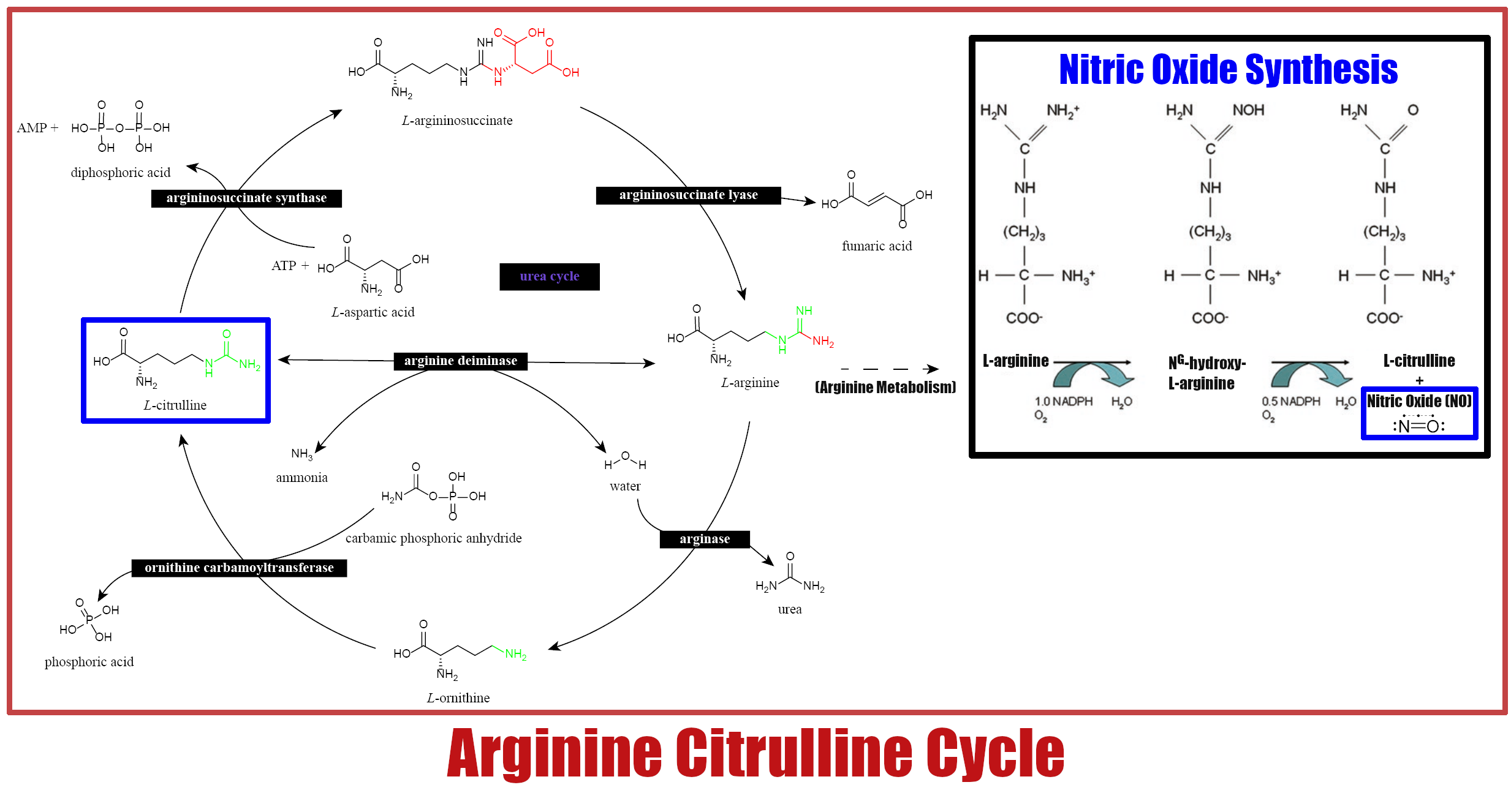
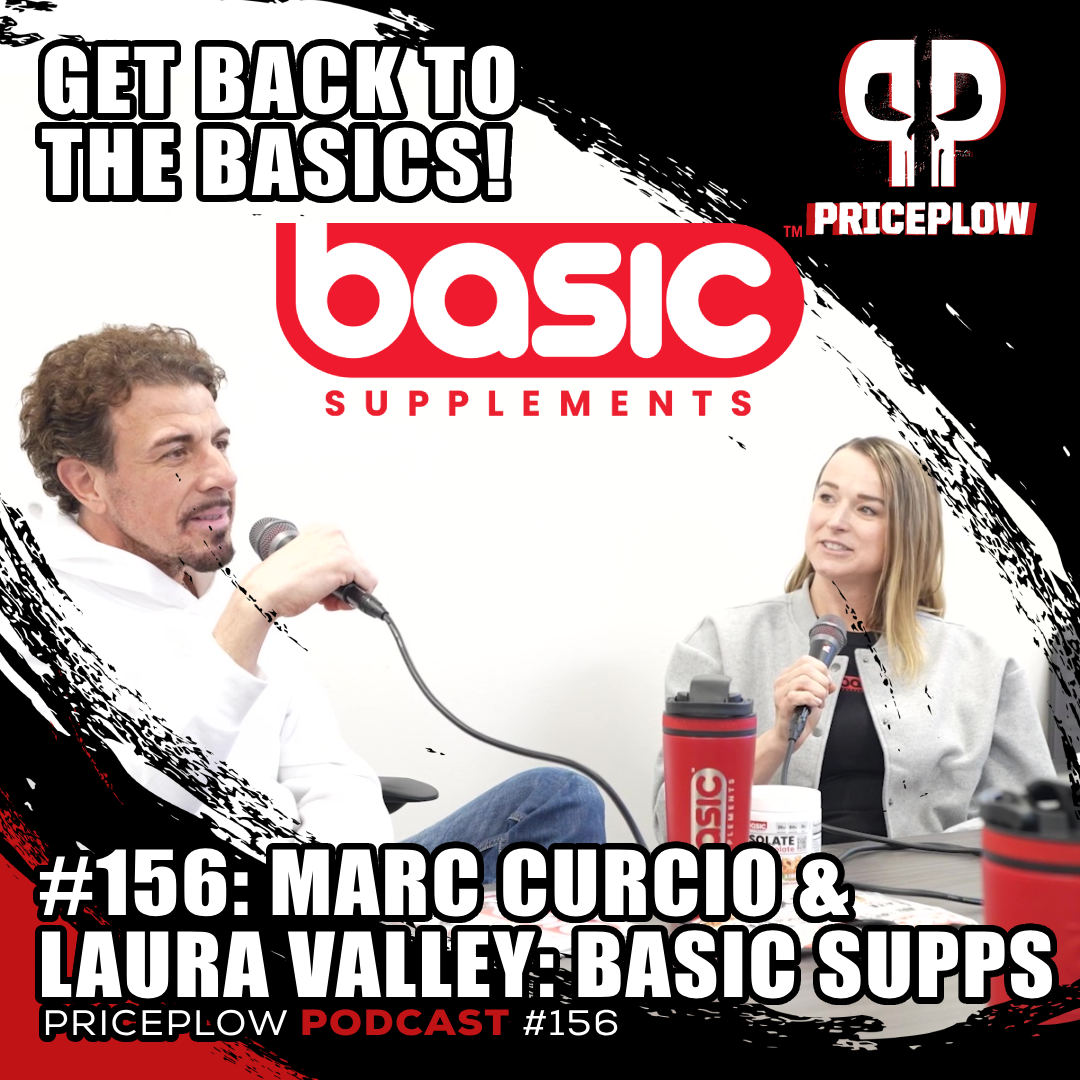
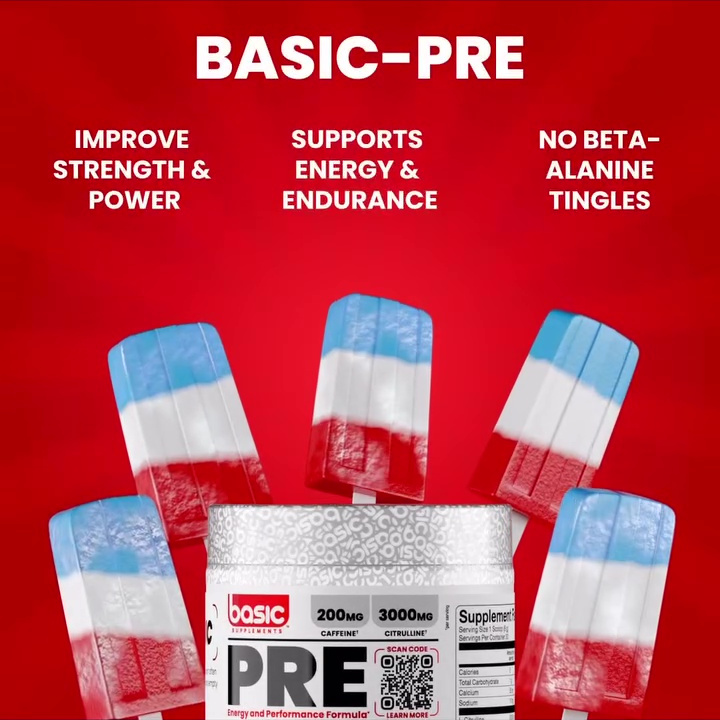
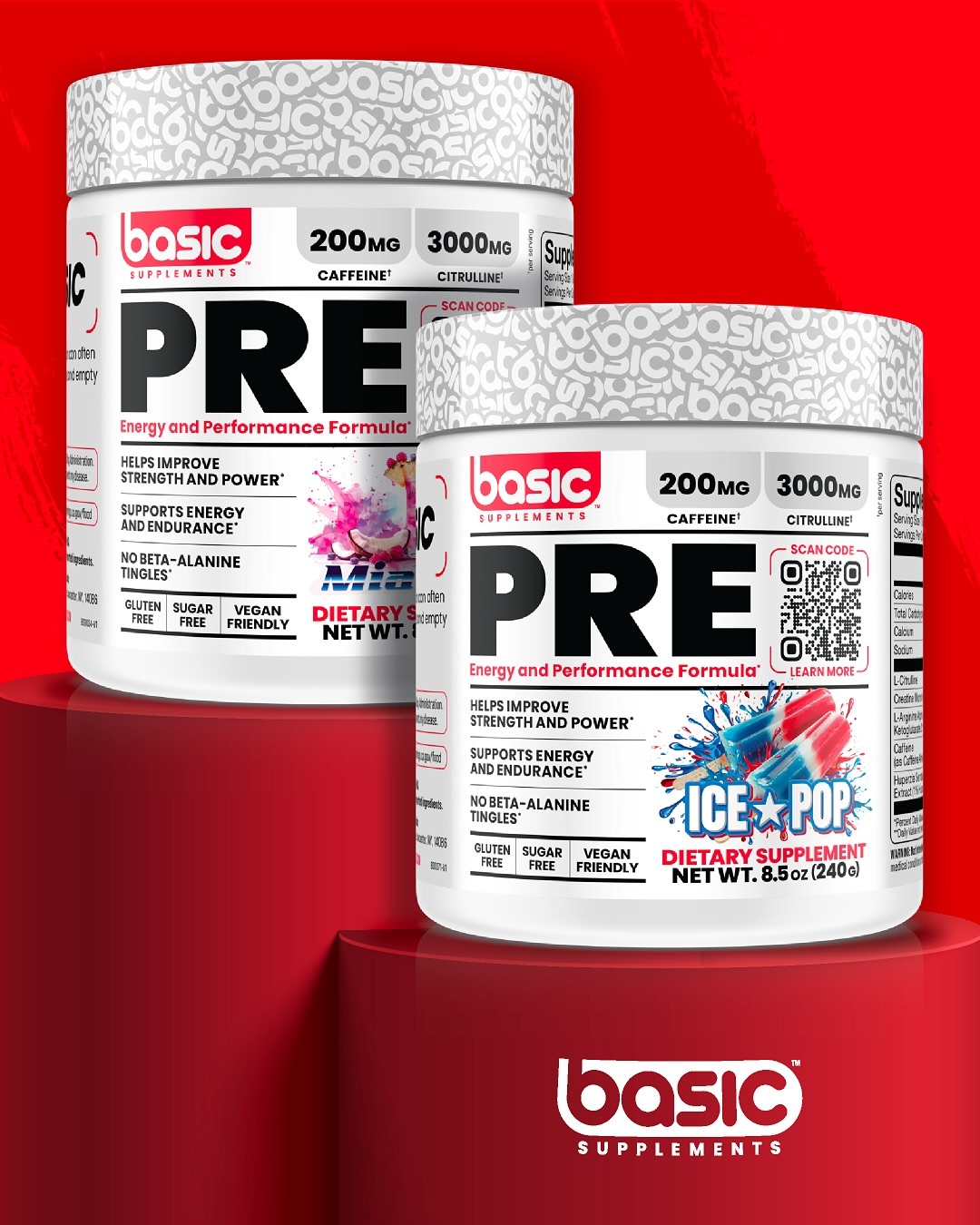
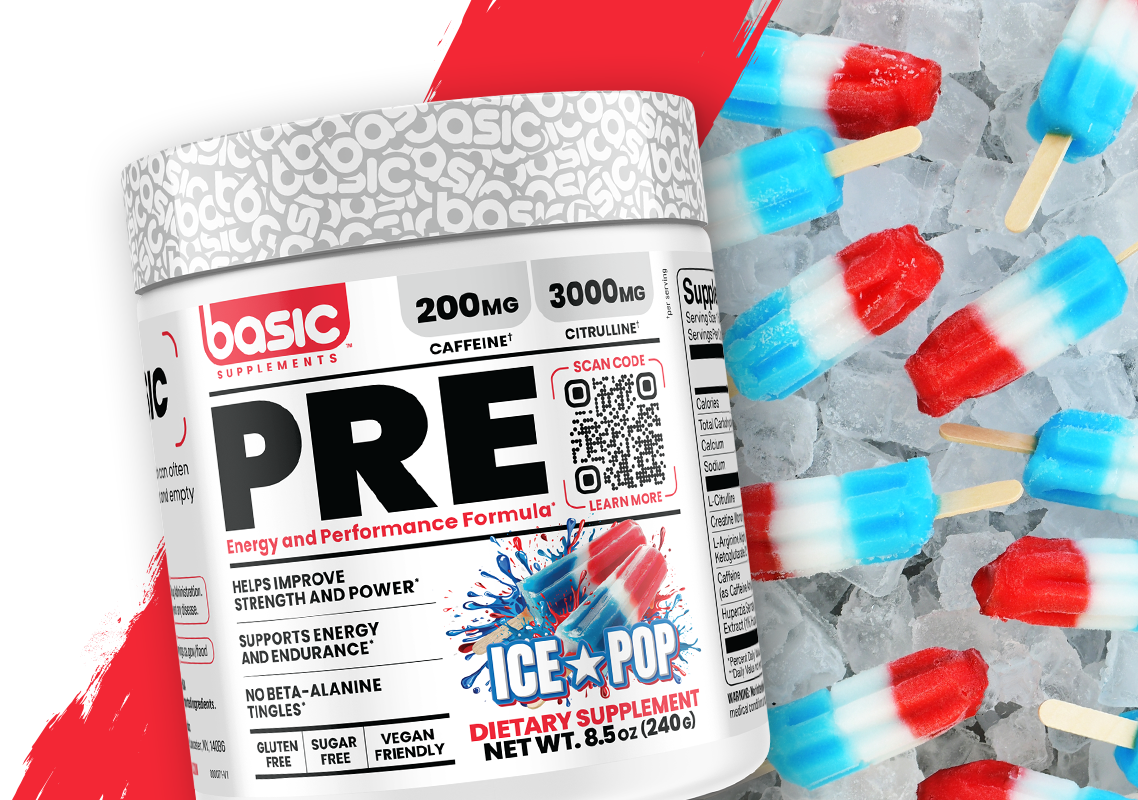


Comments and Discussion (Powered by the PricePlow Forum)